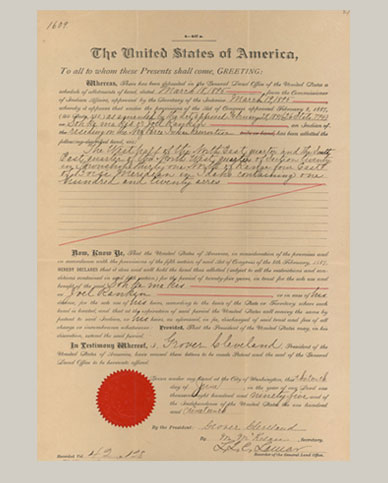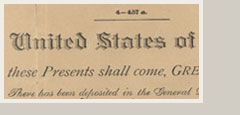|
|
 |
. . . the greed and hunger and thirst of the white man for the Indian’s land is almost equal to his 'hunger and thirst for righteousness'...
Senator Henry Dawes, 1887 |
In 1887, the US Congress passed legislation “to Provide for the Allotment of Lands in Severalty to Indians on the Various Reservations,” also known as the General Allotment Act or Dawes Act. The Act gave the president the power to subdivide reservation property. Every head of a family received 160 acres, each single person over 18 and orphans received 80 acres. All other single persons under 18 born prior to the allotment order, were assigned 40 acres. The allotments were held in trust with the US Government for 25 years. Unallotted lands were declared surplus and could be purchased by non-Indians. This effectively broke reservations into a checkerboard of public, private, and tribal land.
Well-intentioned northeastern reformers had lobbied for the legislation. They assumed that by providing Indian families with their own land, tribal ties and customs would dissipate, and so hasten assimilation. They believed that land ownership would bring prosperity. The allotment process impacted the Nez Perce, Umatilla, and Colville Reservations, and others in the Northwest. For the Nimiipuu, the allotment process did not nullify the terms of the 1855 and 1863 treaties. However, the ever-shrinking land base did not encourage assimilation but eroded traditional practices. The act provided leverage for non-native land promoters and speculators to purchase and exploit previously unavailable land.
MORE... |
|
|
|
|
|







